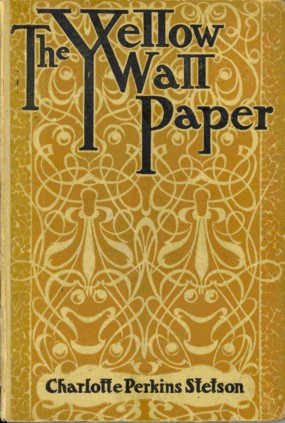“The Yellow Wallpaper” by Charlotte Perkins Gilman – A short story review

In “The Yellow Wallpaper” Charlotte Perkins Gilman writes about a mentally ill woman named “Jane.” Throughout the piece, Jane slowly descends into psychosis, seeing visions of women in the wallpaper.
Jane’s husband John brings her to the estate to “rest” and “recuperate” after she has her first child. While Jane today would’ve been diagnosed with clinical depression, during the time of the story (1892), women’s health was stigmatized and devalued. Jane’s husband (the physician) misdiagnoses her with “temporary nervous depression” and says she only needs rest and forgo any work as her treatment.
Gilman’s “The Yellow Wallpaper” is a feminist standard. The medical field, being dominated by the patriarchy (a society in which men are in control of social, political, and economic intuitions), was lacking comprehensive mental healthcare for women. Gilman challenges the medical field to include women’s mental health by showing how stigmatized the subject is. Even Jane’s own husband, and renown brother (also a physician), agree that her case is not serious. Jane’s case represents all women’s cases and how the male-dominated medical field ignores them. “The Yellow Wallpaper” greatly included first-wave feminist thought, and continues to be one of the most well-known feminist short stories to the this day.
I would recommend this short story to anyone looking to experience classic first-wave feminist literature. Gilman is one of the most famous feminist writers of her time and went on to write full novels for the feminist movement. Gilman is referred to as a leader and model writer within the women’s right’s community. She was a Utopian feminist and believed in the complete overthrow of the patriarchy, which is very apparent in her writing. Overall, I give the short story a nine out of ten.



